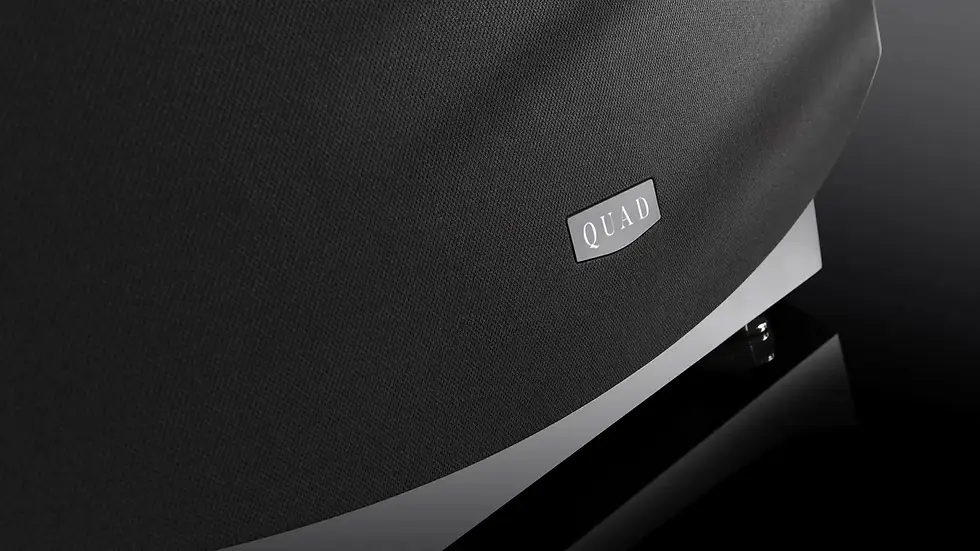Quad's New ESL Electrostatics Deliver Shockingly Precise Sound and Shadowy Style
- ducurguz
- Jul 27
- 2 min read
The iconic British brand refreshes its legendary panel speakers with stealthy looks and dynamic upgrades — and they're every bit the audio purist’s dream.

Old-School Tech, Reimagined for Today’s Audiophiles
Quad — one of the oldest names in British hi-fi — has officially unveiled its next-generation electrostatic loudspeakers: the ESL 2812X and ESL 2912X. The legacy stretches all the way back to the legendary ESL-57 from 1957, but these latest models are far from retro nostalgia. With completely overhauled internals, stealth-inspired finishes, and surgical sonic precision, Quad’s ESL X series represents the most ambitious refinement of their electrostatic line to date.
What Makes Electrostatic Speakers So Special?
Instead of traditional cone drivers, electrostatic speakers use ultra-thin diaphragms suspended in an electrical field. These diaphragms move when an audio signal varies the voltage, producing sound with almost zero distortion, stunning detail, and otherworldly imaging.
While most modern speakers chase power and punch, electrostatics like the ESLs chase something rarer: effortless transparency and true-to-life transients — the micro-details of music that bring it alive.
What's New in the ESL 2812X and 2912X?
While visually similar to their predecessors, both new models feature completely reworked internal architecture:
✅ Refined Electrostatic Panels: Improved materials and tuning help unlock the panel’s full performance potential.
✅ Triple-Module Electronics: Replaces the older all-in-one module with three isolated modules:
High-voltage multiplier
Low-voltage signal module
Central control boardThis improves reliability and signal integrity.
✅ Enhanced Audio Transformers: Custom-wound for greater dynamic range and tighter detail retrieval.
✅ Stealth Aesthetic: A matte black, low-reflection finish and borderless construction allow these towering panels to blend into modern spaces, despite their scale.
ESL 2812X vs 2912X: Key Differences
ESL 2812X | ESL 2912X | |
Type | Floorstanding Electrostatic | Larger Floorstanding Electrostatic |
Dimensions (H×W×D) | 107 × 69 × 38 cm | 147 × 69 × 38 cm |
Panel Elements | 4 Electrostatic Panels | 6 Electrostatic Panels |
Frequency Range | Slightly Lower Extension | Slightly Higher Extension |
Price (Pair) | £10,999 / $14,995 | £12,999 / $17,995 |
Availability | Mid-August 2025 | Mid-August 2025 |
The 2912X is the flagship, with more panel surface area for greater soundstage width, improved bass extension, and slightly better dynamic headroom.

What the Designers Say
According to Peter Comeau, Quad’s Director of Acoustic Design:
“Both new models maximise the sonic advantages of the time-honoured ESL design, while successfully eradicating the perceived downsides. These are truly full-range loudspeakers with demonstrably improved transient and dynamic performance.”
In plain terms? You get the breathtaking clarity of classic electrostatics — but now with more slam, wider dynamics, and greater reliability.
Pricing & Availability
Quad ESL 2812X:
£10,999 / $14,995 / €13,999 / AU$25,000
Quad ESL 2912X:
£12,999 / $17,995 / €16,999 / AU$27,500Both available starting mid-August 2025 via authorized Quad dealers worldwide.
Final Thoughts
Quad's latest ESL speakers may look similar to their ancestors, but under the hood they’re a quiet revolution — blending one of the oldest technologies in hi-fi with modern electronics and subtle design evolution.
For audiophiles seeking the most lifelike reproduction of vocals, strings, and acoustic nuance, these are among the most honest transducers on the planet. They don’t just play music. They disappear, leaving only the performance behind.





Comments